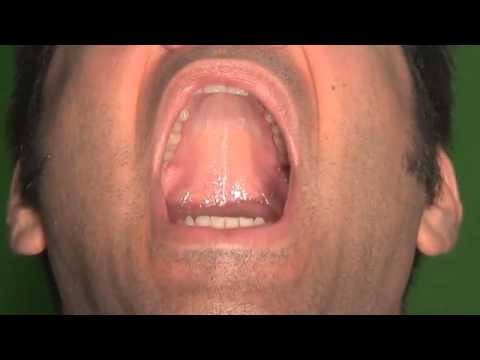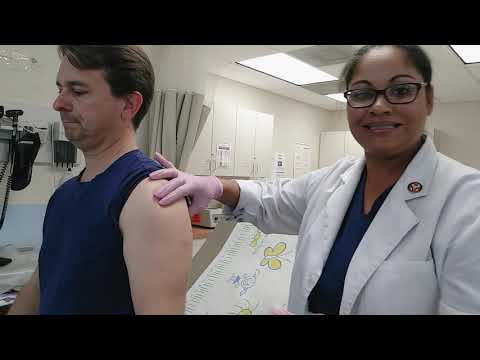Quick Course to Become a Medical Assistant
Contents
In this quick course, you will learn the necessary skills to become a medical assistant You will cover topics such as Medical Terminology office procedures, and patient care.
Checkout this video:
Job Description
The job description of a medical assistant is both clinical and clerical. Medical assistants perform a variety of tasks in doctors’ offices and other healthcare facilities. Their duties vary by state and employer, but they usually take medical histories and record vital signs, explain procedures, assist with examinations, schedule appointments, make laboratory appointments, handle correspondence, bill patients, prepare insurance forms, take X-rays, remove sutures, change dressings on wounds and perform minor office surgery.
Duties and Responsibilities
Medical Assistants are multi-skilled health professionals specifically trained to work in outpatient facilities such as medical offices and clinics. Their responsibilities vary depending on state law and scope of practice, but usually include performing administrative and clinical tasks. Clinical duties may include taking and recording medical histories, measuring patients’ vital signs, preparing patients for examination, assisting the physician during the examination, and performing routine laboratory tests.
Administrative duties may include scheduling appointments, maintaining medical records billing and coding for insurance purposes. Some medical assistants also teach patients about preventive health care assist with minor office surgery such as wart removal or giving injections, or perform basic X-rays.
Skills and Qualifications
Most employers prefer to hire medical assistants who have completed an accredited training program, although some may be willing to train on the job. To be eligible for certification, you must have completed a formal education program and a certain amount of clinical work experience.
There are a number of skills and qualities that will help you succeed as a medical assistant. Above all, you should be patient and compassionate, have good communication skills, be detail-oriented, and able to multitask. You should also be comfortable working with computers and have good people skills.
Education and Training
Education and Training
While there are many ways to become a medical assistant, most will require some formal education and training. There are several medical assisting programs available at both community colleges and technical schools across the country, typically lasting between three and five months. These programs generally include both classroom instruction and clinical experience, providing students with the opportunity to learn both the theoretical and practical aspects of the job.
Salary and Job Outlook
Medical assistants are in high demand and the Bureau of Labor Statistics projects that this field will grow much faster than average through 2028. According to the BLS, the 2018 median annual salary for medical assistants was $33,610. The top 10% of earners made more than $47,080 while the bottom 10% earned less than $24,370.
Certification
There are many reasons to become a certified medical assistant. This profession offers a wide variety of opportunities to help people and make a difference in your community.
Medical assistants work in hospitals, clinics, and other healthcare settings. They perform a variety of tasks, such as taking medical histories and recording vital signs. They also may help give patients injections or take X-rays.
Most medical assistants have postsecondary education, such as a certificate from an accredited program. Some states require certification for certain tasks, such as giving injections. Employers usually prefer to hire candidates who are certified
The Certification Exam is offered by the American Association of Medical Assistants (AAMA). To be eligible to take the exam, you must have completed an accredited medical assisting program within the past 5 years or have at least 5 years of work experience as a medical assistant.
You can prepare for the Certification Exam by taking an practice exam or review course offered by the AAMA or other organization.
Advancement Opportunities
Medical assistants that want to move up in their careers often seek out advancement opportunities. These can come in the form of additional medical training or by taking on more responsibilities at work. Some medical assistants may even choose to start their own businesses.
Those who want to stay within the medical field but do not want to become a doctor have a few different career paths they can take. One option is to become a registered nurse. To do this, they will need to complete an accredited nursing program and pass the National Council Licensure Examination for Registered Nurses. Another option is to become a certified nurse practitioner. This requires completing an accredited nurse practitioner program and passing a national certification exam.
For medical assistants that want to move into a management position, there are many options available. One option is to become a medical office manager. To do this, they will need to have experience working in a medical office, as well as knowledge of office management principles. Another option is to become a health information manager. This requires completion of an accredited health information management program and passing the Registered Health Information Administrator exam.
Tips for Success
Earning your medical assistant certification is a great way to get started in the medical field. As a certified medical assistant, you will be able to perform many of the important tasks that keep a doctor’s office or clinic running smoothly.
If you are thinking about becoming a medical assistant, here are a few tips that can help you succeed:
-Get experience in the medical field. One of the best ways to become a successful medical assistant is to get some experience in the field first. You can do this by working as a volunteer in a hospital or doctor’s office, or by working as an administrative assistant in a medical setting.
-Take courses that will prepare you for the job. There are many different courses that you can take that will help you learn the skills you need to be a successful medical assistant. These courses cover topics such as anatomy, physiology, and medical terminology.
-Make sure you are comfortable with technology. As a medical assistant, you will be using computers and other technology on a daily basis. If you are not comfortable with technology, it is important to take some time to learn how to use it before you start your job.
-Be organized and detail oriented. As a medical assistant, it is important to be organized and detail oriented. You will be responsible for keeping track of patients’ records and scheduling appointments, so it is essential that you are able to stay organized and pay attention to detail.
-Be patient and compassionate. One of the most important qualities of a successful medical assistant is patience. You will be working with patients who may be experiencing pain or anxiety, so it is important that you are able to remain calm and compassionate.
FAQs
-Q: What does a medical assistant do?
A: Medical assistants are multi-skilled health professionals who perform a variety of administrative, clerical and clinical tasks to support the work of physicians and other health professionals.
-Q: Do I need any certification to become a medical assistant?
A: No, you do not need any certification to become a medical assistant. However, many employers prefer to hire candidates who have completed an accredited medical assisting program and have passed the Certified Medical Assistant (CMA) exam administered by the American Association of Medical Assistants (AAMA).
-Q: How long does it take to become a medical assistant?
A: Most medical assisting programs can be completed in about one year, although some may take up to two years to complete. Once you have completed your training, you will be eligible to take the CMA exam.
Glossary of Terms
Below is a list of common medical terms that you will encounter as a medical assistant. It is important to be familiar with these terms, as you will likely hear them used frequently in your work setting.
-Ablation: Removal of tissue.
-Acuity: The level of severity of an illness or injury.
-Admitting diagnosis: The primary reason for a patient’s hospital visit, as determined by the attending physician.
-Anesthesia: A state of temporary unconsciousness induced by administering drugs called anesthetics.
-Arrhythmia: An irregularity in the rhythm of the heartbeat.
-Autoclave: A pressure cooker used to sterilize equipment.
-Biopsy: The removal of cells or tissues for examination under a microscope.
-Catheter: A tube inserted into a body cavity, duct, or vessel to allow drainage or introduce fluids.
-Cerumen: Earwax.
-Chemotherapy: The treatment of disease by use of chemical agents.
-Chronic: Persisting over a long period of time; not acute.
-Comorbidity: The presence of two or more diseases or conditions in a patient at the same time.
-Contraindication: A condition that makes a particular treatment inadvisable.
-Debridement: The removal of dead, infected, or damaged tissue from a wound.
-Decubitus ulcer: A bedsore; an area of skin breakdown due to prolonged pressure on that area.
-Dilated pupils: Enlarged pupils; may be caused by medications, injury, or certain diseases such as hypertension







